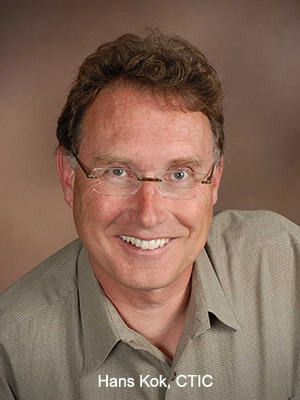Plus-UP News 4Rs Training Newsletter
From the Project Director
In our first year, the 10 farmers in the PLUS-UP program prevented almost 400 pounds of dissolved reactive phosphorus (DRP) from entering the Lake Erie watershed. For a little pilot project with 10 farmers and 5,000 acres, that's a big number.

DRP fuels algal blooms like gasoline feeds a fire. For PLUS-UP, we estimated the value of a pound of DRP at $100, a measure of the environmental damage it can cause and the cost of trying to remove it from water supplies to prevent it from enlarging the harmful algal blooms (HABs) that plague Lake Erie.
DRP also feeds plants, so every pound of DRP that leaves a field is depriving the crop of vital nutrients. By piloting PLUS-UP, we demonstrated that no-till and cover crops can significantly reduce the off-farm movement of DRP into surface waters. Judy Smith and Dr. Laura Johnson at Heidelberg University's National Water Quality Research Center demonstrated with their models that slope and soil type dramatically impact DRP loss from a field—a vital insight that can help us target DRP credits and BMP (best management practice) efforts where they can do the most good.
Through PLUS-UP, we also demonstrated that a phosphorus trading program with supply chain support—in the case of our pilot project, the generous purchase of our first DRP credits by the Bayer Carbon Program—is a feasible, affordable way to reduce DRP flow into the watershed and loss from area farms. Like many environmental credit programs, PLUS-UP was a win/win, a stimulus to help farmers adopt BMPs and a way for Bayer CropScience to achieve environmental objectives of its own.
In addition to stimulating phosphorus-holding practices on fields enrolled in PLUS-UP, our program also includes wider outreach in the Western Lake Erie Basin. On August 23, with funding from the U.S. Environmental Protection Agency Great Lakes Restoration Initiative (US EPA GLRI) and the generous hosting of The Andersons, we will hold a one-day nutrient stewardship training workshop in Maumee, Ohio.
At the workshop, attendees will learn lessons from the PLUS-UP program, dig into the 4Rs of Nutrient Stewardship, get an update on H2Ohio and Ohio State University water quality work in the WLEB...and more. We have also applied for CEU credits from the American Society of Agronomy, which would make the workshop a great way for CCAs to earn as many as 4 CEUs free. And—rare in the post-lockdown world—this opportunity won't be on Zoom. It's in-person, a chance to ask questions, compare notes and network with real, live people.
See the article below for details and a link to the free registration form.
We're writing checks right now to the PLUS-UP farmers who participated in the pilot project. We're analyzing the processes and results of the pilot to figure out how to best scale up the program. And we are exploring the possibilities of expanding PLUS-UP so the next number we report to you will be a lot greater than 400 pounds.
Thank you for your interest in PLUS-UP. I hope to see you in Maumee at the August 23 workshop.
Hans Kok, PhD, CCA
Senior Project Director
Conservation Technology Information Center
4R Nutrient Stewardship Training Workshop
Tuesday, August 23
The Andersons
1947 Briarfield Blvd.
Maumee, OH
8:00 am to 2:00 pm
Join us for a free nutrient stewardship training workshop that will include presentations from:
- Dr. Laura Johnson and Judy Smith of the National Water Quality Research Center at Heidelberg University
- Julie Payeff of The Andersons
- CTIC Staff and the Bayer Carbon Program
- Ron Restum of Ostara
- Kip Studer of H2Ohio
- Greg LaBarge, Ohio State University
We have applied for 4 CEU credits from the American Society of Agronomy's CCA program.
Lunch will be served, and participation is free. Click here to register and see more details.
PLUS-UP Progress
Preparing payments for the 10 farmers participating in the PLUS-UP pilot program has helped us bring the phosphorus credit program into focus, better understand the dynamics of dissolved reactive phosphorus (DRP) and develop efficiencies that would allow us to scale up the program to cover far more acres and operations in the future.
Judy Smith of the National Water Quality Research Center at Heidelberg University developed procedures to streamline the verification and data input processes in the NTT Model, which is a vital step in making the PLUS-UP program scalable. We also learned the ins and outs of farmer enrollment, another process that demands efficiency and accuracy.
In all, analyzing 5,000 acres in the Western Lake Erie Basin for DRP reductions has been extremely instructive. Among the most important lessons, says Smith: topography and soils have a huge impact on DRP loss from fields. Understanding those dynamics can help future programs target the most effective practices and the acres where they can do the most good.
"If you have higher slopes, even a tiny farm can have huge DRP savings," Smith says.
Complete data analysis is underway. Stay tuned for details.
PLUS-UP Story Map
An interactive online "story map" details the PLUS-UP program by overlaying facts about the pilot project over an ArcGIS map of the Western Lake Erie Basin.
The story map, created by Roger Meyer and Kevin Stark of Geospatial Services team at St. Mary's University of Minnesota, is a dynamic exploration of the challenges of nutrient enrichment in the basin, the PLUS-UP pilot project, and the role of cover crops and no-till in reducing the off-target flow of DRP.
Click here to explore the map on the CTIC website.
Program Partners
CTIC
National Water Quality Research Center, Heidelberg University
Geospatial Services, St. Mary's University of Minnesota
Bayer Carbon Program

